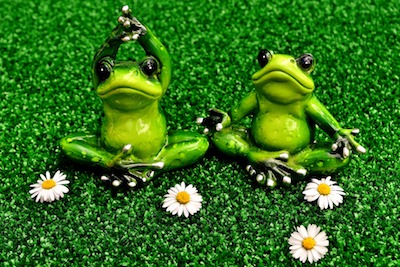As an Amazon Associate, I earn from qualifying purchases.

Beginners to meditation and those who want to learn to meditate may know or have heard that doing meditation is good for you. It relieves stress, helps you concentrate better, and can increase your emotional intelligence. Meditation also helps to quiet your mind so you can connect with your subconscious or inner self.
Non-meditators, are you busy and don’t think you have time to meditate properly? Or perhaps you tried it before and thought it was boring or difficult?
More experienced meditators and non-meditators, have you ever met someone who proclaimed that there was a “correct” way to meditate? You must sit cross-legged on the floor. You’re only allowed to chant a mantra that has been given to you by a guru. This inflexibility (or “discipline”) can make meditation intimidating and unappealing.
But let’s be grateful for this blessing in disguise. The dogmatic people who insisted that you meditate in a certain way are more likely to belong to cults. So, for you to be turned off by this saved you from being entangled in a potential cult.
The trick to do meditation correctly is to accept that there isn’t a correct way to meditate. Just as there isn’t one correct religion for everyone, there isn’t one correct way to meditate for everyone.
Hundreds of Ways to Meditate
There are hundreds of ways to meditate and a vast array of choices. Mindfulness, a Buddhist tradition, has become very popular in the West as a secular practice. Another well-known method is the Eastern meditation of chanting a mantra. Meditation is also an important element in yoga and martial arts.
In addition, there are other approaches to reach a meditative state. Though they may not fit the conventional image of meditation, they ultimately take you to the same state. Have you ever been so engaged in an activity and in “the zone” that you lost all track of time? That’s what a meditative state is—being completely focused on the present, not worrying about the future or ruminating over the past. This state of flow can occur with activities such as musical improvisation or watching fish in an aquarium.
Just as there are differing levels of fitness between elite athletes and normal folk, there are different levels of meditative practice. Practicing common forms of meditation for 20 to 40 minutes a day is enough to benefit most people. This translates to lower stress, improved concentration, and perhaps increased emotional intelligence.
A regular person who exercises 1 to 2 hours a day isn’t going to be at the same level as a professional athlete who trains 5 to 8 hours a day. Likewise, watching fish swim or eating mindfully for 20 minutes isn’t going to alter your brain waves the same way as practicing deep meditation for four or more hours per day.
Yet, compare investing 30 minutes a day to achieve 80 percent of the benefits to spending 4 hours a day to optimize to 100 percent. Wouldn’t you rather spend those extra hours doing something else?
So, feel free to choose a meditation depending on your mood and energy level. You can even combine a few types of meditations in one sitting. Or do one form of meditation in the morning and a different one in the evening! Lightning will not strike you for doing so.
Acceptance When You Do Meditation
There IS one caveat to the rule of having no rules in meditation: don’t judge yourself. Don’t judge your thoughts, your feelings, or whether you’re meditating the correct way. Don’t judge how flexible you are, how fat your stomach is, or how long you can sit still.
Accept whatever arises during your meditation, practice self-compassion, and don’t judge yourself. This is a Buddhist teaching that is often overlooked in secular practice. Non-judgment is crucial in personal growth and transformation.
Being critical of yourself contradicts the act of meditating. Don’t worry about how your butt looks when you’re doing downward facing dog in yoga. Don’t obsess over counting how many repetitions of the mantra you’ve chanted. And don’t force yourself to be.
Some people pressure themselves to meditate even when they lack sleep or aren’t feeling well. These are often the same people who push themselves to go to the gym through rain or shine—or flu.
Listen to your inner self about what kind of meditation to do, and for how long. That’s the whole point of meditation—to connect with your inner self.
Now that you know the secret to do meditation correctly, you may like to explore a few different ways to meditate. Allow me to guide you through A Meditation Tasting: 12 Easy Practices from Fun to Formal.
Want support with learning how to meditate? Lifestyle factors such as stress management and getting quality sleep can prevent and reverse conditions such as belly fat, high blood sugar, and high blood pressure. Contact me for a free discovery call to see if my health coaching can help you!
